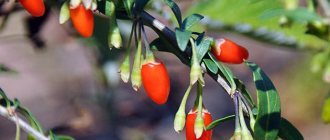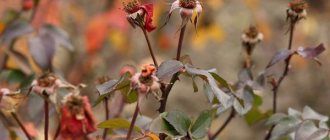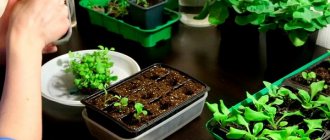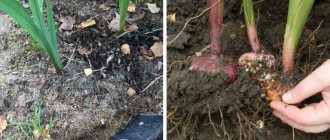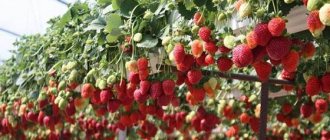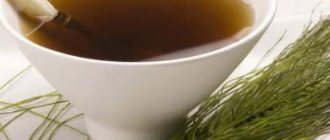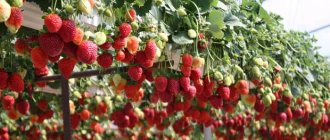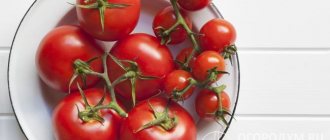If even ordinary strawberries (garden strawberries) are, in principle, one of the most favorite berry crops among our summer residents, then what can we say about remontant strawberries, which are capable of producing crops several times a season, laying many fast-growing inflorescences!
Some varieties of remontant strawberries have berries that are not so large, but they ripen continuously until frost. Others have larger fruits, and the harvest is usually harvested in two or three “waves” - in June/July and August/September.
- The best varieties of remontant strawberries for the middle zone
Review of the best varieties of remontant strawberries for the middle zone.
But no matter what variety your remontant strawberries belong to, in any case they require careful autumn care, of course, if you want to enjoy a bountiful harvest next season. After all, the health and good fruiting of any strawberry greatly depends on competent agricultural technology.
So, what procedures are indicated for this crop in the fall?
Features of remontant strawberries
How does a reusable crop differ from ordinary garden strawberries? It differs in the characteristics of fruiting, and, therefore, care. Their agricultural technology also differs.
The main feature of reusable strawberries is that they can please you with a harvest throughout the warm season.
Types of remontant strawberries
Reusable strawberries are divided into 2 types:
- DSD - which means “long daylight hours”, that is, the crop bears fruit 2-3 times a season. The first time - together with the earliest varieties of ordinary Victoria, the second time after 2 months, and the third time - in the fall, in warm weather. In the southern regions, the berries turn red to “infinity.”
- NSD - “neutral daylight”, that is, strawberries pamper themselves with a harvest almost without interruption. The best representatives of this group are Albion, Vima Rina, Queen Elizabeth and San Andreas.
Features of care
Caring for remontant strawberries also has its own characteristics. They manifest themselves in watering, fertilizing, mulching, removing the first flower stalks, and preparing for winter. The differences may not be too big, but they are worth paying attention to.
For example, large-fruited varieties of remontant strawberries can form very large berries weighing up to 90 grams. Naturally, in order to grow such berries, plants take all trace elements from the soil. The soil is depleted by autumn, so it will be necessary to apply fertilizers.
In order for plants to direct all their strength to the formation of large berries, many gardeners advise cutting off the first flower stalks. What should I do, cut it off or not? It has been experimentally proven that if you pick off the first flowers, the berries appear earlier and they are much larger.
Gardeners naturally feel pity, because Victoria is just beginning to bloom, and here they have to pick off the flowers!
How to properly remove flower stalks? Simply break it off with your hands at the base even before flowering begins. This especially applies to first-year plantings. By removing the flower stalks, you give the strawberries the opportunity to grow strong roots, rather than devote all their energy to flowering.
We will consider other agricultural techniques separately so that remontant strawberries will delight you with a bountiful harvest for a long time.
How to protect from frost
The shelter can consist of natural and artificial materials. Each of them has its pros and cons, but their general purpose is to eliminate the influence of unfavorable factors as much as possible.
Film
To insulate the beds, you can use film, covering the plantings on top with it. It is stretched over the ridge, secured on the sides with boards, logs or other suitable objects. Film is the cheapest and fairly wear-resistant material.
Its advantage is that it can last for several seasons, but its disadvantage is its inability to allow air to pass through. If you use a film shelter, it is better to install arcs that form the frame of the shelter and create an air gap between the film and the bushes.
Agrofibre (covering material)
Agrofibre is a type of spunbond; it has a fabric structure and has different densities. It is often simply called covering material. It is better to use a denser material as a cover; you can use either black or white. This shelter allows moisture to pass through freely, which prevents condensation from accumulating inside. Another advantage of agrofibre is its environmental safety, since it is made from polypropylene.
The material retains its performance qualities for up to 4 seasons. In cold regions, this shelter is not suitable as the main one, but it can be used in combination with other materials. The disadvantages include the relatively high cost of agrofibre. In areas where there are winter thaws, it is better not to use it due to its ability to let water inside. Plants can get wet and then freeze in cold weather.
Spunbond
Spunbond is made from the finest polymer threads, which are laid into the fabric with the help of an air flow. It is often used to protect plants from severe frosts. The advantages of the material include a homogeneous structure, which promotes uniform distribution of heat and moisture under the shelter, high thermal insulation properties, wear resistance, resistance to low temperatures, inertness towards chemicals, and resistance to mold.
While there is no snow cover, spunbond perfectly protects the plants themselves and their root system from frost and facilitates a smooth transition into winter. The disadvantages of the material include its low resistance to ultraviolet radiation, but in winter this factor does not matter.
Leaves
If you are going to use foliage for shelter, it should be collected in dry weather, immediately after the leaves fall. The advantages of this natural insulation include its availability and organic composition, which will then serve as food for earthworms, which increase soil fertility.
Dry leaves are often used as one of the layers of a multi-layer shelter. Such insulation can cause harm to plants if the foliage is wet - as a result, mold will begin to develop under the shelter. Also, you should not use leaves that have fallen from infected bushes or trees, so as not to transfer pathogenic microflora to covered beds.
Sawdust
It is advisable to sprinkle strawberries with sawdust in regions where there are frosty and snowy winters. The sawdust will protect the bushes from freezing during the first frosts, and later the plant will be covered with snow. In areas where there are frequent temperature changes and snow melts and then falls again, it is undesirable to use this material.
If you nevertheless decide to cover the strawberries with sawdust in a region with an unstable climate, build a frame on the garden bed that needs to be covered with film on top, and filled with sawdust inside. It is best to mix sawdust with leaves and peat. In spring, the fertilizer will be dissolved by melt water, and the sawdust will settle and prevent the growth of weeds.
Covering strawberries with sawdust for the winter: video
Plastic bottles
Experienced gardeners do not recommend using plastic bottles to cover strawberries. Plants covered with an airtight bulb may dry out during the winter. It is also possible that in the spring the bushes, waking up from hibernation, will begin to grow early, since they will be in greenhouse-like conditions.
The first return frosts will kill the young shoots. There is a fairly wide selection of other shelters that will provide reliable and proper wintering, so there is no need to use halves of plastic bottles.
Needles
Covering berry bushes with pine needles is beneficial for several reasons:
- The needles do not get wet, do not absorb moisture, and therefore will not contribute to the decay of the bush.
- In the spring, you can mix the remains of the mulch layer with the soil to improve its structure and provide additional nutrition.
- Another advantage is that the needles scare away rodents who, in a hungry winter, can feast on strawberry bushes.
The disadvantage of this method is that pine needles acidify the soil and in the spring it will be necessary to add additives to neutralize the increased acidity.
Sheltering strawberries for the winter with pine needles: video
Is it possible to cover with straw, marigolds?
Mulching strawberry bushes with straw is used both in the summer and for shelter for the winter. This organic material contains Bacillus hay, which has a beneficial effect on the composition of the soil. Those bushes under which there is rotted straw in the ground will never develop root rot. In winter, this material is an excellent insulator; it protects plants from initial frosts until snow falls.
Marigolds are usually sown between strawberry rows to repel pests. This annual plant effectively fights root nematode. In the fall, marigolds do not need to be cut - they will play the role of natural snow retainers. It is also acceptable to cut the plants and use them as cover over strawberry bushes or in combination with other mulching materials. Even in this case, marigolds will repel all kinds of harmful insects and their larvae from strawberries.
Do I need to water strawberries in the fall?
Remontant strawberries are more demanding when it comes to watering, because they need to produce crops throughout the summer, and August-September is the time to lay buds, from which shoots will grow the following summer.
If it is a dry, warm autumn, then the reusable variety should be watered as the soil dries out or once a week, 1 bucket per 1 square meter. meter of bed. If it rains, then naturally there is no need to water. Strawberries also do not need to be watered in the fall just before frost.
The rest of the time, care in the fall consists of abundant watering, because this crop continues its growing season until the coldest weather. Therefore, it needs moisture not only during the active growing season in summer, but also in autumn.
In addition to watering, in order for the bushes to survive the frosty winter well, they must be regularly irrigated with warm water from the beginning of September. Irrigation is carried out in the evening or early in the morning.
Autumn feeding of remontant strawberries
It is necessary to care for remontant strawberries from planting until late autumn, so that they have the strength to produce several harvests per season, and then survive in the winter. Therefore, this crop requires feeding not only in summer, but also in autumn, otherwise the bushes will go into winter completely exhausted.
Of course, before feeding in September, the rest should not be missed - nitrogen in the spring, potassium during flowering and complex during the fruiting period.
- In August and September, an infusion of vermicompost is added, but this is not the last feeding. This is followed by another big feeding. By sending the prepared Victoria for the winter, you will be sure that next summer you will have a harvest again.
- After harvesting the last berry, the remontant variety must be fed again. The following mixture is suitable for this procedure: add 100 ml of mullein to 1 bucket of water, add 0.5 cups of ash and 2 tbsp. superphosphate. Under each bush you need to pour 300 ml of the mixture.
- You can feed strawberries for the winter with the following composition: potassium sulfate (30 g) and nitroammophoska (2 tablespoons). Scatter the mixture (50 g per 1 square meter) between the bushes and water well.
- Special autumn complex fertilizers are also suitable. The last feeding is carried out by region, this is September-October.
- Many gardeners feed reusable strawberries with an infusion of wormwood or nettle. The crushed raw materials are poured with water, then left in the sun for 6-7 days. A liter of infusion is poured into a bucket of water and watered. Strawberry bushes are fed with bird droppings at a rate of 1:15, as well as cow manure at a rate of 1:10.
Moisture-charging irrigation
If it rains frequently in the fall, it is not necessary to water your strawberries in October. Otherwise, so-called moisture-charging irrigation is carried out. At the beginning of autumn, after the last harvest of remontant strawberries is harvested, the amount of watering gradually begins to be reduced. In September, the beds are not moistened. Watering is carried out only in case of severe drying out of the soil.
Smart Clothing: Ingenious Tricks to Save Significant Time
Trampled the mentor: what does Patlakh do, who was kicked out of the show “Dancing”
Postures for heart health: how to sit correctly
Water-recharging irrigation begins only in early to mid-October. Such watering is carried out once every 7 days. Strawberries are poured to the level of the root tips. The root system of strawberries is superficial. Therefore, there is no need to pour too much water into the beds in October.
Treatment
Having harvested Victoria, gardeners do not stop caring for the plants. After all, taking care of the strawberry plantation in the fall will result in a good harvest next season.
First of all, you need to remove the old leaves. Then pruning is carried out. Next comes the treatment of the beds with insecticides and fungicides so that pests do not remain on the bushes. Wintering plants without pests is the key to a clean, healthy harvest.
To rid the plantings of pests, they can be treated with Bordeaux mixture or brilliant green, which is diluted as follows: 12 drops are dripped onto a bucket of water and treated.
Increasing its immunity will help prepare strawberries for winter. To do this, it is watered with the preparations Fitosporin, Zircon, Actofit.
Strawberry care continues. Now it needs to be loosened between the rows and mulched. You need to loosen carefully so as not to touch the roots. The root system is located close to the surface, so you need to step back 15-16 cm from the bush.
With bare roots, wintering strawberries will not be able to survive until spring. After loosening, soil must be added under each bush. The new, loose soil keeps the roots from freezing well.
Mineral fertilizer
After mid-September, nitrogen must be excluded from the compositions used to feed strawberries. This element is necessary for plants to form green mass, which is unnecessary in the fall. In October, remontant strawberries are fertilized with products that allow the plants to endure the winter more easily and to quickly prepare for flowering and fruiting next season.
Giant obsidian “blade”, 20 thousand years old, discovered in China
20 ml of peroxide per liter of water: 5 tips for growing strong pepper seedlings
An investigation by Samara local historians confirms: “Zoya’s Standing” is a legend
In mid-autumn, it is best to feed strawberries with a fertilizer made independently from the following ingredients:
- superphosphate - 3 parts;
- potassium sulfate - 2 parts.
Both components are dissolved in a bucket of water. Most likely, it will not be possible to dissolve superphosphate in cold water. This component is poured into a tank and filled with hot water (almost boiling water). After the granules disappear, the solution is mixed and poured into a bucket of water. Water the strawberries at the rate of 50 g of fertilizer per 1 m2.
Landing
Planting of remontant strawberries is carried out throughout the growing season. But it is best to plant in early spring or early September. It will have time to take root before frost sets in.
Selecting a location
Remontant strawberries cannot be planted after cucumbers, potatoes, cabbage, all nightshades and cruciferous vegetables.
It will grow well after onions, garlic, beets, carrots, radishes, and legumes.
It is good to plant marigolds, onions and garlic next to remontant strawberries so that pests do not interfere with the growth of this berry crop.
Victoria is not too picky about soil. The main thing is good care, and it will grow on any soil except swampy and dry sandy.
If you take good care of remontant strawberries, they will give you a rich harvest when planted on slightly acidic loams and sandy loam soils.
How to plant correctly
Planting of remontant strawberries is carried out in rows in well-fertilized soil. 70-80 cm is left between the rows, and a distance of 20-30 cm between the bushes.
How to plant Victoria bushes correctly:
- To plant a bush, you need to dig a hole up to 25 cm deep and pour about one liter of water into it.
- Lower the bush, cover it with soil, compact it. There is no need to deepen it. Make sure that the root collar is visible.
- Loosen the soil between the rows.
- At first, protect from sunlight and water.
If you decide to expand the plantings, then prepare a new bed. Organic and mineral fertilizers must also be added to it according to the instructions.
Landing dates
You can plant reusable strawberry seedlings from July to the end of August. During this time, the new seedlings will take root and leave for the winter prepared. If mustaches begin to grow and you see that the seedlings are blooming, then all this must be carefully removed.
All tendrils and flowers must be plucked off until the plantings are covered with snow. Such actions will help to produce an early harvest of NSD varieties.
After the harvest of reusable strawberries is completed, planting seedlings can continue. First-order mustaches are suitable for planting; the rest must be removed.
Preparing for winter
The beds with seedlings need to be prepared for wintering. What should be done? After the seedlings have taken root, the row spacing should be covered with rotted manure, 8-10 cm thick. This procedure is an important stage in preparing strawberries for winter.
If the winter has little snow, the seedlings may die. The best technique for insulation is to create a covering structure, as with all reusable strawberry beds.
Preparatory work in the fall
For remontant strawberries, several winter months are a real test, especially if the winter has little snow. In the fall, it is necessary to properly carry out all the work to prepare the berry crop for winter so that the strawberry rosettes do not freeze. Strawberries should meet the winter with sufficiently increased green mass. It will protect the plant buds from frost.
Gardeners need to check every bush. The root collar should not stick out of the ground; you need to sprinkle it with earth. At the end of summer, the ground around the bushes is loosened and then mulched.
If the winter is snowy, it will reliably cover all the bushes. But what to do if there is no snow at all? In this case, leaves or hay will become shelter. Such materials will protect the crop from frost, but they are not very convenient, they get wet from moisture, and in the spring it is very difficult to clean strawberry rosettes from them.
With frequent thaws and high humidity, the bushes may dry out. Another drawback is that mice like to spend the winter under straw; they can damage the roots.
Mulching strawberries in autumn
Autumn care for reusable strawberries includes mandatory mulching of the beds. For this purpose, you can use straw, hay, sawdust, dry leaf litter, covering the beds with a layer of up to 15 centimeters.
Over time, the mulch will settle, covering the ground more tightly. For the winter, the ground can be covered with green manure, which has time to grow before frost.
Before autumn mulching, the beds must be loosened and watered. The mulch does not need to be placed on the bushes themselves; it is laid out around them.
Straw is the most useful mulch. When it rots, hay bacillus will begin to develop in the soil. This soil bacterium loosens the soil so well that the roots begin to receive more oxygen, which means they grow better. In addition, the hay bacillus protects plantings from dangerous fungi.
Mulching provides the following benefits:
- Ripe berries do not touch the ground.
- Retains moisture in the soil, which leads to a reduction in watering.
- There is no need to loosen the soil; oxygen reaches the roots.
- Prevents weeds from growing
How to prune remontant strawberries in the fall
A debate is flaring up among gardeners: should remontant strawberries be pruned or not? Many gardeners believe that it is impossible to cut off the foliage of plants, even very old ones. After all, it protects the roots from freezing and traps snow in the garden bed.
However, there is a reasonable opinion that removing old tops is a mandatory procedure that will help get rid of diseases and pests.
Many harmful insects remain overwintering in the old foliage, and in the spring they begin to harm Victoria again. Therefore, after picking berries, almost all foliage and tendrils are cut off from remontant varieties.
Pruning of remontant strawberries is carried out very carefully, trying not to touch the fruit buds. If you cut them, then next year you can be left without any berries at all. The height of the trimmed bush should be 11-12 centimeters so as not to damage the plant.
For pruning, you need to prepare strawberry garden pruners or sharp scissors. After this work, the beds are loosened, watered abundantly, then sprinkled with ash, and mulch is laid out.
In order for plants to avoid fungal diseases, they must be treated with Bordeaux mixture or a solution of copper oxychloride. The mulch also needs to be treated with the same preparations.
A debate is flaring up among gardeners: should remontant strawberries be pruned or not? Many gardeners believe that it is impossible to cut off the foliage of plants, even very old ones. After all, it protects the roots from freezing and traps snow in the garden bed. Removing old tops is a mandatory procedure that will help get rid of diseases and pests.
You can conduct an experiment: trim one bed, but not the other. But a flowering bush must be freed from peduncles so that the flowers do not drain all the strength from the roots.
Preparing for winter
In addition to all manipulations, it is necessary to prepare a shelter, protecting the plants from freezing in winter. To prevent mice from getting inside the shelter, it is best to cover plantations with seedlings with pine needles or spruce branches.
Young plantings must be completely covered, while mature ones must be surrounded. During thaws, the beds may die from damping off, so the shelter will have to be removed.
To avoid making a shelter, gardeners make beds over which they build insulating structures. But first, the beds are sprinkled with ash, mulch is placed, and then covered with non-woven lutrasil or agrotex.
It is warmer inside the structure than outside, which makes it easier for strawberries to overwinter. The fabric allows air to pass through, so the seedlings do not become damp from condensation. When it warms up, the shelter must be dismantled.
If you learn from experienced gardeners their techniques on how to prepare remontant strawberries for winter, you can learn a lot of interesting things.
- It turns out that overgrown weeds are not removed before frost, but are left until spring.
- Preparations for winter should be started after the first frost, so that the plants harden a little.
- Do not cover the strawberries too early.
Summer residents have adapted to plant the most winter-hardy varieties. The winter-hardy variety Lyubava has become very popular. It hardly suffers from pests. Queen Elizabeth and Selva also winter well under cover.
How to properly cover strawberries from frost for the winter
The method of shelter depends not only on the region where strawberries are grown, but also on other factors. It is necessary to additionally take into account the age of the bushes and the planting method.
Adult
Mature plants, as a rule, are quite strong enough to successfully survive the winter. The main thing is to build the shelter on time and not be late with the lines. To preserve developed bushes, it is enough to cover the growth point, which is the most vulnerable. In those regions where there is a lot of snow in winter and there are no extremely low temperatures, many do not use additional shelter at all or use light preventive insulation.
Planted in autumn
Strawberries planted in the fall focus all their efforts on rooting and adaptation in the soil. Wintering can become an additional load that berry bushes cannot cope with. To help plants survive the winter, it is better to mulch them on the eve of frost with hay, straw, lawn grass, and stems of annuals.
In light frost, such a shelter will be enough to protect the roots and above-ground parts from freezing, and later the bushes will be additionally covered with snow. In the spring, you will need to inspect the beds and, if necessary, remove some of the mulch; the remaining part of the rotted cover will serve as fertilizer.
young
Young bushes do not have time to get stronger before the beginning of winter, so it is more difficult for them to endure wintering than for an adult plant. To insulate them, it is necessary to use a mulch layer that completely hides the plantings underneath. In cold regions, it is additionally advisable to use a frame shelter with several layers of lutrasil or spunbond.
In the pyramid
Pyramids used for planting strawberries save space on the site, but at the same time have their own characteristics in care. As for winter shelter, the method will depend on the height of the pyramid. If it rises no more than 60 cm above the ground, no additional shelter is needed. The plant will be covered with snow. To cover the top of the head, the snow mass is additionally raked with a shovel. Higher structures should be covered around the perimeter with covering material in several layers. This growing method is most suitable for the southern regions.
Beardless variety
There is also a beardless variety of remontant strawberries. It saves space and time and is more resistant to heat and drought.
Peculiarities
Growing and caring for vineless strawberries is a little easier because you don't have to trim the vines. As soon as the snow melts, it begins to bloom. And then delicious oblong berries appear on the spreading bush. Flowering continues almost until frost.
Strawberryless reusable strawberries are often planted in borders, in flower beds, as a decoration. But it requires a transplant every 2 years. You can plant by dividing the bush, or you can use seeds, which are taken from the largest berry.
When to prune dead strawberries?
Here, too, gardeners will not come to a consensus. Many people think that there is no need to trim it, while others cut it in August, as they say, with a “hedgehog” cut.
You can make 2 small beds, trim one and not the other. Draw a conclusion based on the result.


